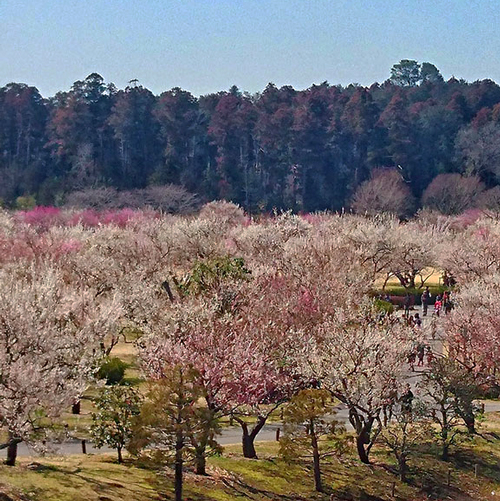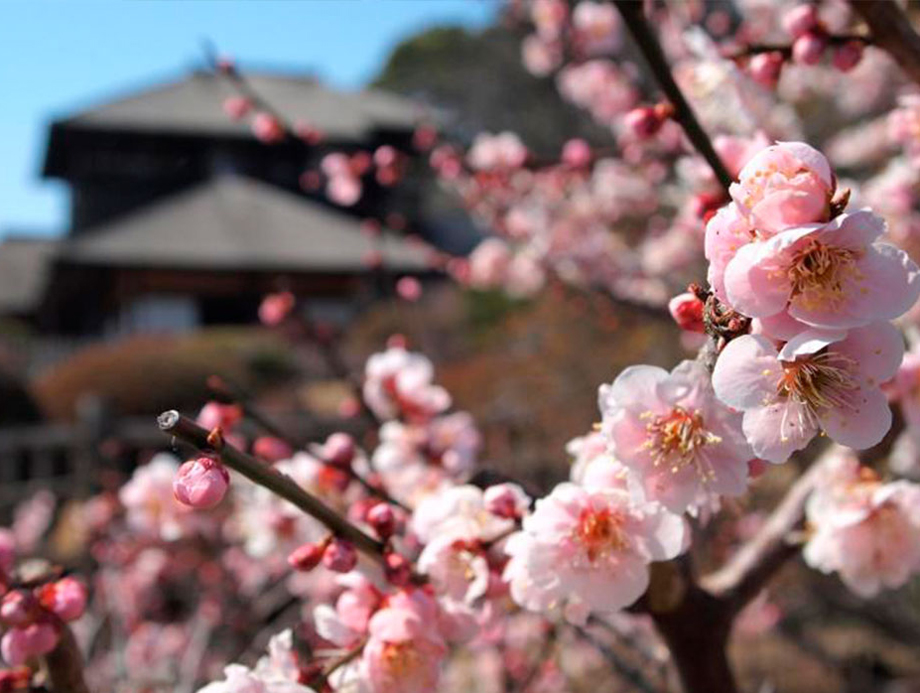Bus-Guide
Around Tokyo
Bus-Guide 関東エリアバス観光ガイド
Kanto Area Bus Tourist Guide
関東エリアバス観光ガイド
Kanto Area Bus Tourist Guide
Bus-Guide
Copyright NIHON BUS ASSOCIATION

GUIDE 03
滞在時間14:15-16:00
Length of Stay14:15-16:00
東京駅発 茨城県水戸市 From Tokyo to Mito, Ibaraki
偕楽園(水戸梅まつり)冬のごちそう「あんこう汁」の試食 Kairakuen (Mito Plum Festival) - Tasting the winter delicacy "Monkfish Soup"GUIDE03
偕楽園(水戸梅まつり) Kairakuen Garden (Mito Plum Festival)
茨城県水戸市にある日本庭園で、日本三名園の一つとして知られています。
特に梅の名所として有名で庭園内には約3,000本もの梅の木が植えられており、2月から3月にかけての梅の花の季節には、多くの観光客で賑わいます。自然の美しさと共に豊かな文化を感じることができる偕楽園は、足を運ぶ価値のある場所としてオススメです。
この時期にしか味わえない冬のごちそう「あんこう汁」の試食もご用意しました。
Located in Mito City, Ibaraki Prefecture, Kairakuen is one of Japan’s three most renowned gardens. Famous for its plum blossoms, the garden is home to around 3,000 plum trees. From February to March, when the blossoms are in full bloom, it attracts numerous visitors. Offering both stunning natural scenery and a rich cultural atmosphere, Kairakuen is highly recommended as a place well worth a visit.
We have also prepared a tasting of ankō-jiru (monkfish stew), a winter delicacy available only at this time of year.

<偕楽園とは>
江戸時代、水戸藩九代藩主・徳川斉昭(なりあき)によって造園されました。「偕楽園」の名前には、領内の民と偕(とも)に楽しむ場にしたいと願った斉昭の想いが込められています。
文武修業の場(一張・いっちょう)である「弘道館」と修業の余暇に心身を休める場(一弛・いっし)である「偕楽園」は、相互に補完しあう一対の教育施設として創設されました。
<もっと知りたい!深掘り>
~あんこう汁~
あんこうの「どぶ汁」は、いわゆる漁師料理で、鍋に漁で撮れたあんこうをさばき、火にかけた鍋に肝と味噌を入れ焼き焦がし、あんこうの身と野菜をいれた、簡易的な漁師の鍋です。それを基に、鍋料理として提供されるようになったものが、あんこう鍋と伝えられています。冬が旬のあんこうは肝にはたっぷり脂が乗り、身にはゼラチン質が豊富に含まれています。
「あんこうの七つ道具」といって、正身、エラ、皮、肝、胃袋、卵巣、頬肉を食します。中でも特質すべきは、エラを食するということです。他の魚で、エラを食することはあまりありません。
The garden was created by Nariaki Tokugawa, the ninth feudal lord of the Mito domain, during the Edo period.
The name "Kairakuen" reflects Nariaki's wish to make it a place where he and his people could enjoy themselves together.
Kairakuen Garden was founded as a pair of educational facilities that complemented each other: Kodokan, a place to study literature and practice martial arts (tension), and Kairakuen, a place to rest during leisure time (relaxation).
I want to know more! Digging deeper
~Ankō-jiru (monkfish stew)~
“Dobu-jiru,” a dish traditionally prepared by fishermen, involves cleaning a freshly caught anglerfish (known as ankō in Japanese) and placing it in a pot. The liver and miso are added first and lightly scorched, followed by the anglerfish meat and vegetables, creating a simple one-pot meal. This dish is said to be the origin of today’s “ankō nabe” (monkfish hot pot).
Anglerfish is in season during winter. The liver is rich in fat, and the meat itself is high in gelatin. Known as the “seven tools of anglerfish,” the edible parts include the main body, gills, skin, liver, stomach, ovaries, and cheek meat. Notably, eating the gills is quite unique to anglerfish, as the gills of most other fish are rarely consumed.
偕楽園 Kairakuen Garden
〒310-0033 茨城県水戸市常磐町1丁目3−3 1-3-3 Tokiwacho, Mito, Ibaraki 310-0033